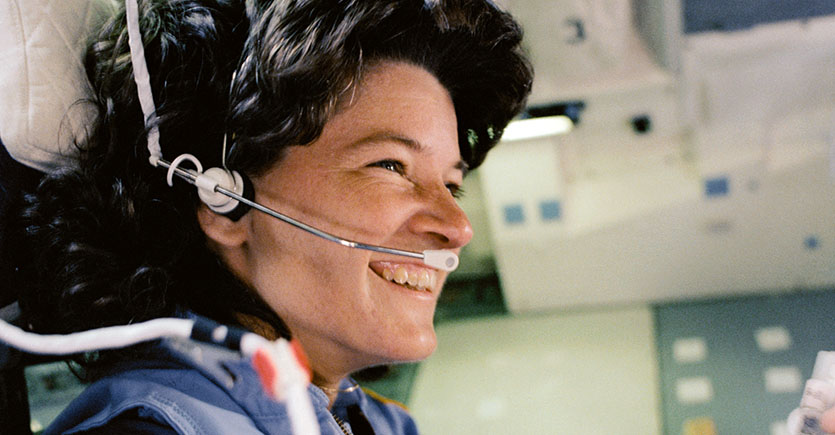
Sally Ride (1951-2012)
NASA Astronaut / First American Woman in Space
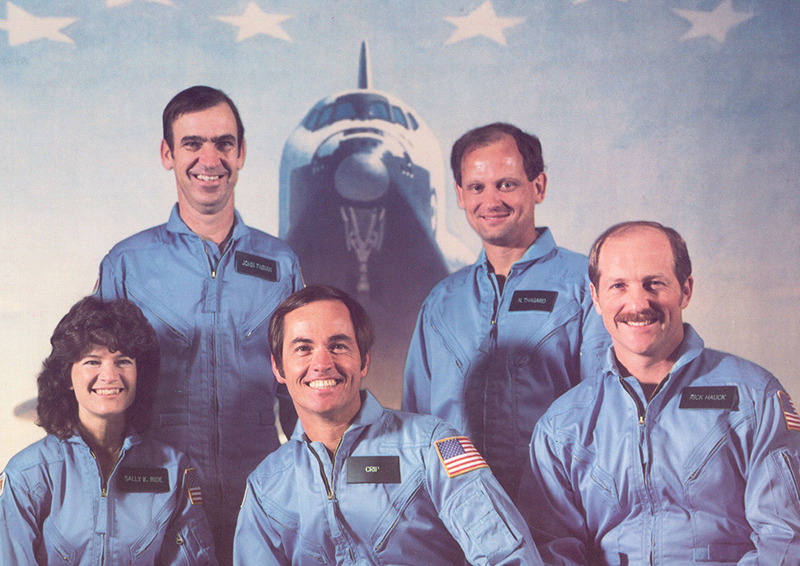
Sally Ride's place in history was assured on June 18, 1983, when she rocketed into space on Challenger's STS-7 mission with four male crewmates. Her contribution to America's space program continued right up until her death.
After two trips to orbit aboard the shuttle, she went on to an award-winning academic career at the University of California, San Diego, where her expertise and wisdom were widely sought on matters related to space. She holds the distinction of being the only person to serve as a member of both investigation boards following NASA's two space shuttle accidents.
She also served as a member of the Review of U.S. Human Spaceflight Plans Committee in 2009 which informed many of the decisions about NASA's current human spaceflight programs.
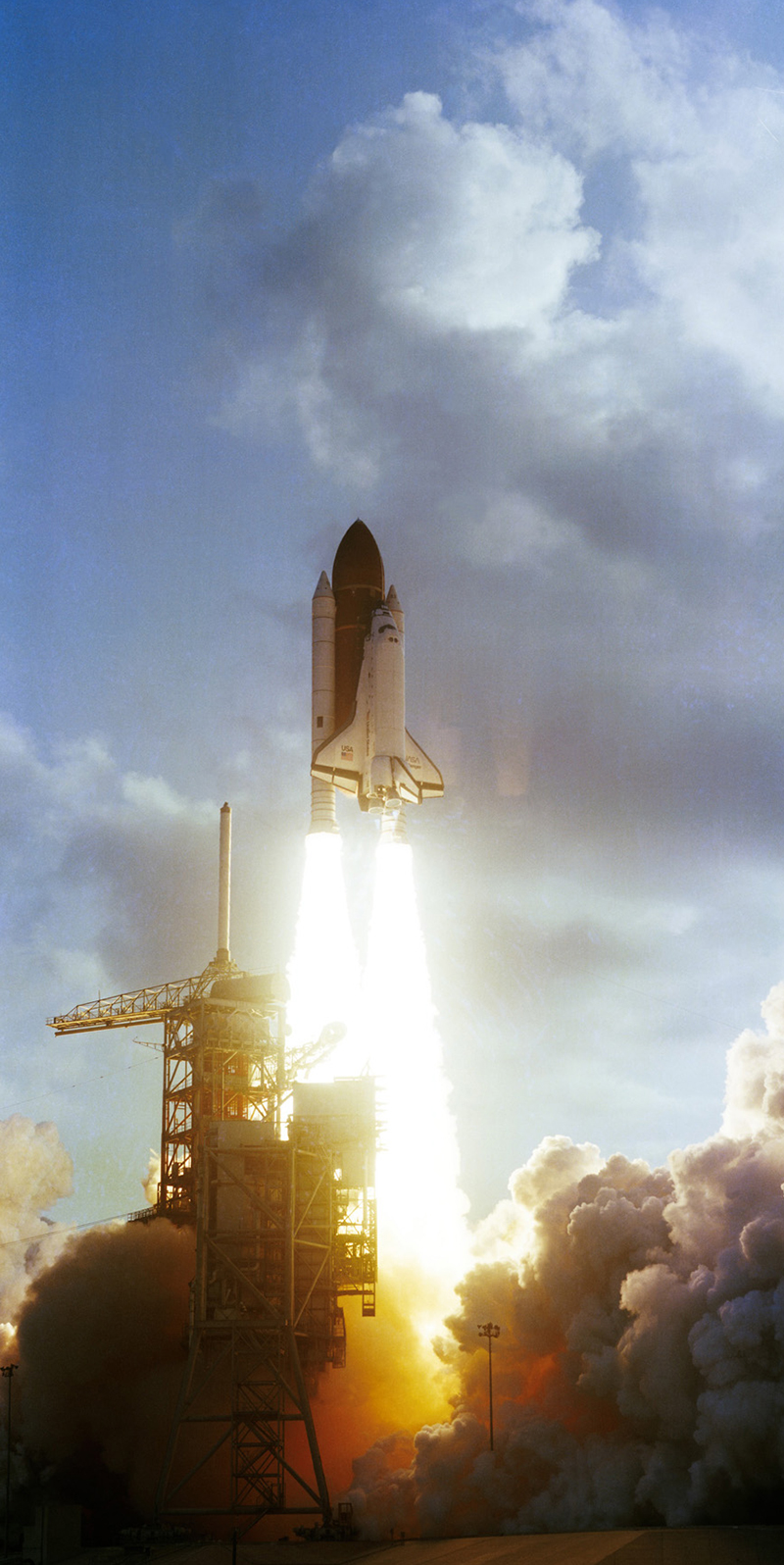
"The fact that I was going to be the first American woman to go into space carried huge expectations along with it," Ride recalled in an interview for the 25th anniversary of her flight in 2008. "That was made pretty clear the day that I was told I was selected as a crew. I was taken up to Chris Kraft's office. He wanted to have a chat with me and make sure I knew what I was getting into before I went on the crew. I was so dazzled to be on the crew and go into space I remembered very little of what he said."
"On launch day, there was so much excitement and so much happening around us in crew quarters, even on the way to the launch pad," Ride said. "I didn't really think about it that much at the time – but I came to appreciate what an honor it was to be selected to be the first to get a chance to go into space."
Ride joined NASA as part of the 1978 astronaut class, the first to include women. She and five other women, along with 29 men, were selected out of 8,000 applicants. The class became known as the "Thirty-Five New Guys" and reported to the Johnson Space Center the next summer to begin training.
Ride trained for five years before she and three of her classmates were assigned to STS-7. The six-day mission deployed two communications satellites and performed a number of science experiments.
Following that historic flight, Ride returned to space on another shuttle mission, STS-41G in 1984. The 8-day mission deployed the Earth Radiation Budget Satellite, conducted scientific observations of Earth, and demonstrated potential satellite refueling techniques.
She was assigned to a third flight but transitioned to a role on the Rogers Commission that investigated the Challenger accident after that shuttle was lost in January 1986. When the investigation was completed, she accepted a job as a special assistant to the NASA administrator for long-range and strategic planning.
Ride left NASA in 1989 to join the faculty at the University of California, San Diego, as a professor of physics and director of the University of California's California Space Institute. In 2001, she founded her own company, Sally Ride Science, to pursue her long-time passion of motivating girls and young women to pursue careers in science, math, and technology.
A native of Los Angeles, Ride graduated from high school there in 1968 and enrolled at Stanford University. At Stanford, she earned four degrees, including a doctorate in physics in 1978. She also was an accomplished athlete who played varsity tennis at Stanford after being nationally ranked as a youth.
Ride received numerous honors and awards during the course of her career. Most notably, she was inducted into the National Women's Hall of Fame and the Astronaut Hall of Fame, and received the Jefferson Award for Public Service, the von Braun Award, the Lindbergh Eagle, and the NCAA's Theodore Roosevelt Award.
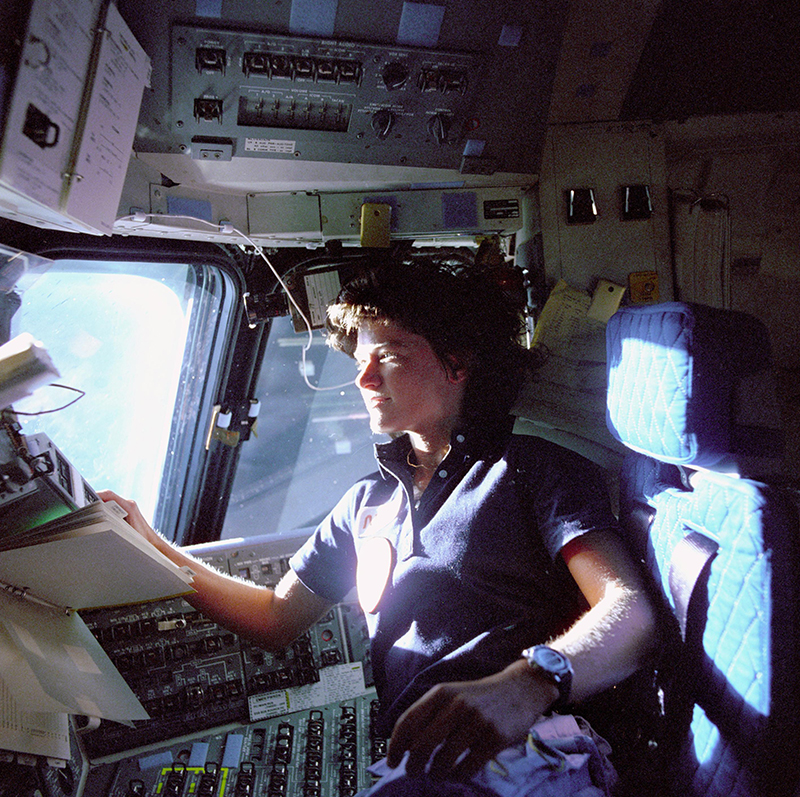
One moment I will never forget is from when I was an astronaut. I remember floating over to the window for the first time, looking toward the horizon and seeing a very, very thin royal-blue line all the way across the horizon. It looked like someone had taken a blue pencil and outlined the Earth. Then I realized that the blue line was Earth's atmosphere. It was memorable because it was obvious then how fragile and delicate our atmosphere is – there just isn't very much of it-- but it sure is important!
I attended Stanford University and received a Bachelor of Science in physics and a Bachelor of Arts in English in 1973. I also received a Master of Science and doctorate degrees in physics from Stanford in 1975 and 1978, respectively.
I applied to NASA's astronaut program after reading an ad for it in a newspaper. Over 8,000 men and women applied to the space program that year. Of the 35 individuals accepted, six were women, and I was one of them. This was in January 1978. In August 1979, I completed a one-year training and evaluation period, which made me eligible for assignment as a mission specialist on future space shuttle flight crews. While in training, I worked on the development of the shuttle's robot arm. I also worked in mission control as a capsule communicator (CAPCOM) on the STS-2 and STS-3 missions.
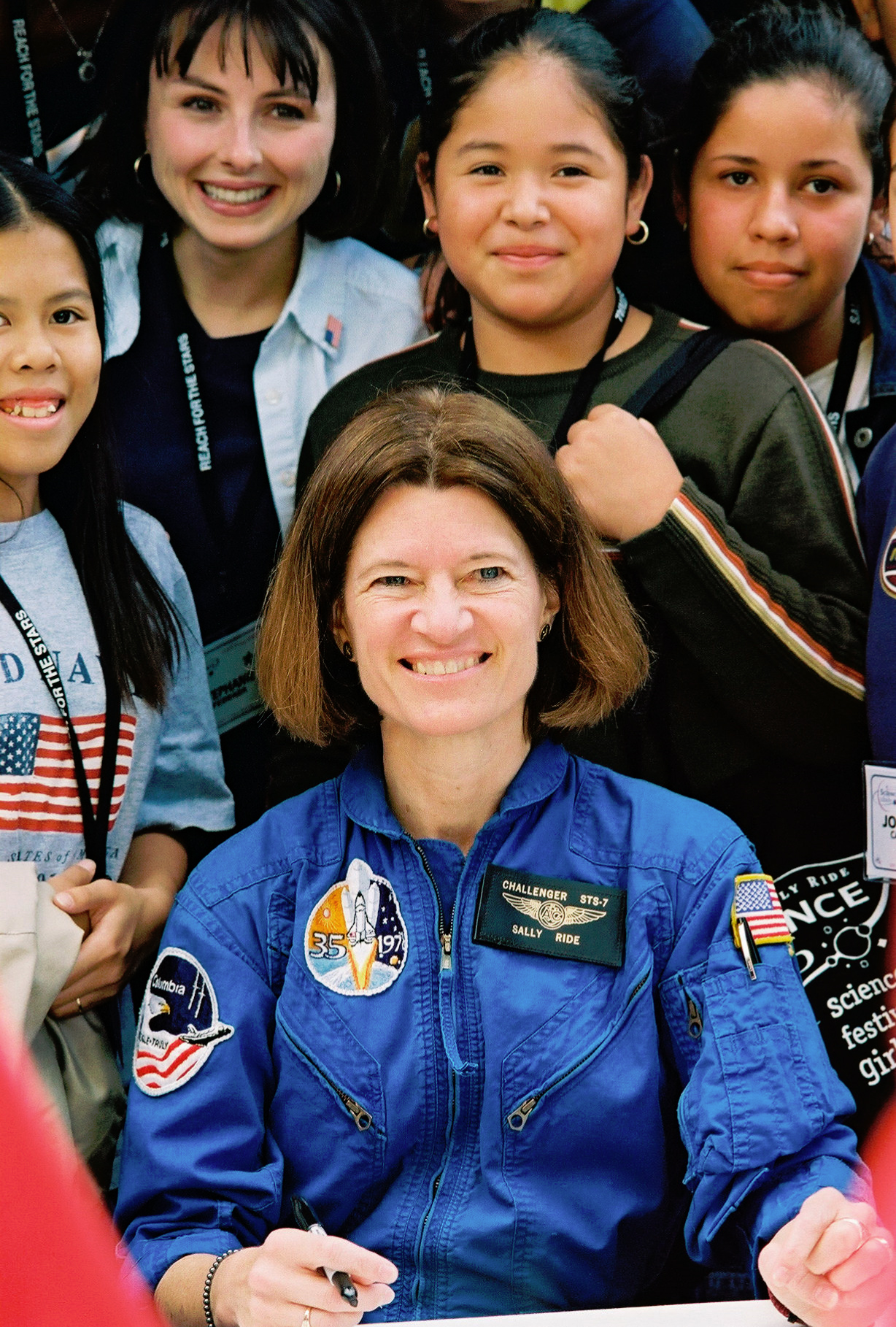
My father was very, very inspirational. He was a middle-class, community college teacher in Southern California, and he put a real value on education. (My father had gone through school on the GI Bill, and he wanted to make sure that his daughters knew the importance of education to get ahead in the world.)
I also played a lot of competitive tennis growing up -- I loved science, but if I was outside I was playing tennis and so professional tennis player Billie Jean King was one of my role models.
I am the first American woman to fly in space. I was a mission specialist on STS-7, which launched from Kennedy Space Center on June 18, 1983. I retired from NASA in 1987 after nine years of service.
In 2001 I founded my own company, Sally Ride Science, to pursue my long-time passion of motivating girls and young women to pursue careers in science, math, and technology.
I wanted to start a company that would create good science programs and materials that would capture girls' imaginations, show both boys and girls a variety of role models (in everything from astrobiology to environmental engineering to rocket science), and encourage them to continue to pursue their interests as they grow older. I know that there are lots of girls out there who are just as interested in science as I was when I was growing up!
Rocketing into space aboard the space shuttle Challenger as the first American woman to fly in space is one of my favorite moments. The thing I liked best about being in space was being weightless! There's really nothing like it on Earth. When we first reached orbit, I did what lots of astronauts do: while I was still strapped in my seat, I held my pencil in front of my face and let go of it. It floated! Once I got used to weightlessness, I could do 30 somersaults in a row and slither like a seal from one side of the cabin to the other with just a gentle push.
And of course, we couldn't resist playing a little bit with our food -- floating a blob of orange juice in the middle of the room and sending peanuts drifting into each others' mouths from across the room. Fun!
Scientific careers are not geeky.
When I was younger I played tennis. Nowadays, I enjoy running, volleyball, softball, and stamp collecting.
Keep interested in science and do well in your math and science classes. Science and math education is critical to our country's future.
Editor's Note: This profile includes materials and statements found on Sally Ride's company's website: Sally Ride Science
Planetary science is a global profession.

